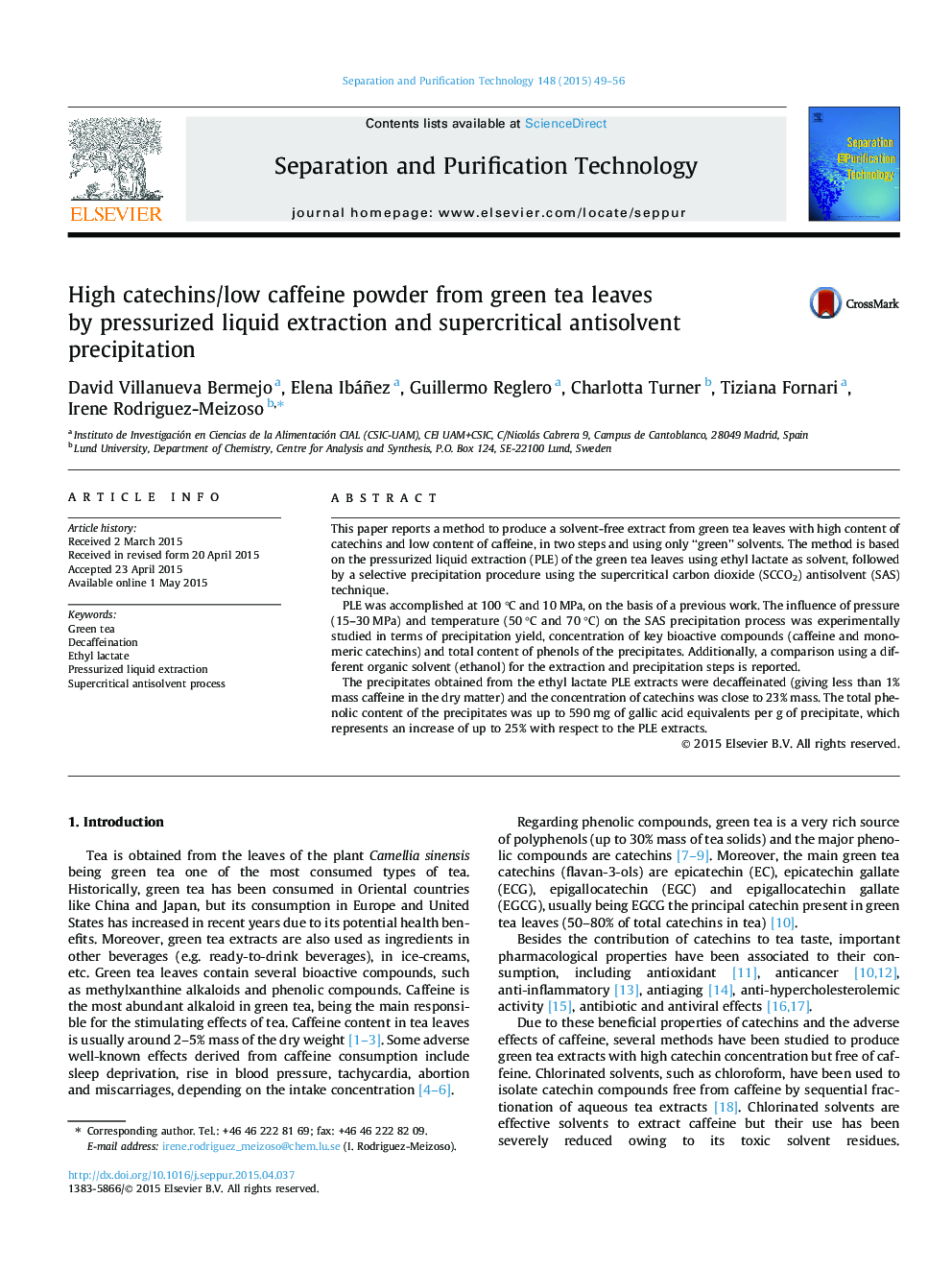| Article ID | Journal | Published Year | Pages | File Type |
|---|---|---|---|---|
| 640621 | Separation and Purification Technology | 2015 | 8 Pages |
•A new clean method to produce decaffeinated extracts from green tea leaves.•Only two steps yield solvent-free extracts with 23% mass of catechins.•Step 1: pressurized liquid extraction with ethyl lactate.•Step 2: selective precipitation of catechins with supercritical carbon dioxide.•Replacing ethyl lactate for ethanol does not yield selective precipitation.
This paper reports a method to produce a solvent-free extract from green tea leaves with high content of catechins and low content of caffeine, in two steps and using only “green” solvents. The method is based on the pressurized liquid extraction (PLE) of the green tea leaves using ethyl lactate as solvent, followed by a selective precipitation procedure using the supercritical carbon dioxide (SCCO2) antisolvent (SAS) technique.PLE was accomplished at 100 °C and 10 MPa, on the basis of a previous work. The influence of pressure (15–30 MPa) and temperature (50 °C and 70 °C) on the SAS precipitation process was experimentally studied in terms of precipitation yield, concentration of key bioactive compounds (caffeine and monomeric catechins) and total content of phenols of the precipitates. Additionally, a comparison using a different organic solvent (ethanol) for the extraction and precipitation steps is reported.The precipitates obtained from the ethyl lactate PLE extracts were decaffeinated (giving less than 1% mass caffeine in the dry matter) and the concentration of catechins was close to 23% mass. The total phenolic content of the precipitates was up to 590 mg of gallic acid equivalents per g of precipitate, which represents an increase of up to 25% with respect to the PLE extracts.
Graphical abstractFigure optionsDownload full-size imageDownload as PowerPoint slide
